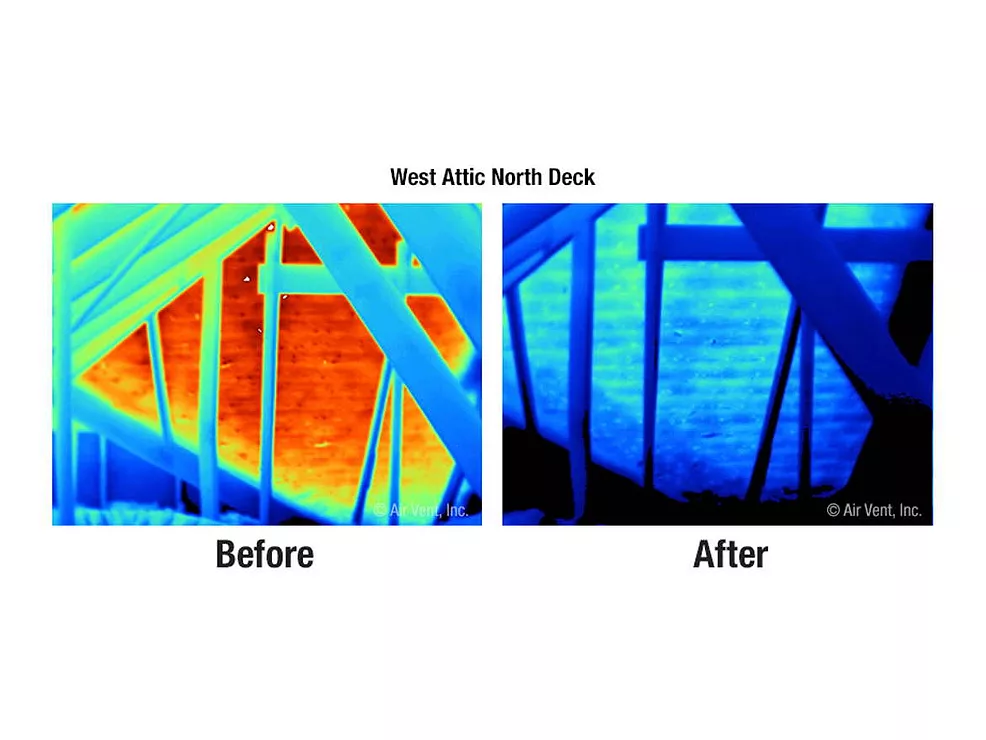Cultivating a Green Thumb
By now, most roofing contractors know the basics about green roofing systems along with their many benefits. What started in Germany more than 40 years ago, but was viewed by many as just a fad for several years in the United States, has now become quite common on rooftops throughout North America. Much of this popularity is the result of the fact that as more and more green roofs have been installed, their benefits and features have been more thoroughly realized, analyzed and reported.

 By now, most roofing contractors know the basics about green roofing systems along with their many benefits. What started in Germany more than 40 years ago, but was viewed by many as just a fad for several years in the United States, has now become quite common on rooftops throughout North America. Much of this popularity is the result of the fact that as more and more green roofs have been installed, their benefits and features have been more thoroughly realized, analyzed and reported.
By now, most roofing contractors know the basics about green roofing systems along with their many benefits. What started in Germany more than 40 years ago, but was viewed by many as just a fad for several years in the United States, has now become quite common on rooftops throughout North America. Much of this popularity is the result of the fact that as more and more green roofs have been installed, their benefits and features have been more thoroughly realized, analyzed and reported.
Originally, experts knew green roofs were excellent tools for minimizing storm water runoff from facilities, with many believing that was their core benefit. But interestingly, as the testing and analyzing of green roofing systems continued, more features and benefits materialized, including their ability to reduce energy use and minimize heating and cooling demands by providing added insulation. Other benefits include making facilities quieter and lengthening the life expectancy of the existing roof.
However, less is reported on how to actually install a green roof and how to care for and feed the system once it is installed. Because some roofing contractors are now being brought into the green roof installation process as well as the initial maintenance once the green roof is installed, this is a good time to get a better understanding of the basics of both the installation procedure and the maintenance thereafter.

Green roof installations fall into one of two categories: built-in-place, which is the older, more conventional system, and modular, a relatively new technology that was developed earlier in the decade to meet installation challenges encountered during the construction of a green roof atop Chicago’s City Hall.
As the name implies, built-in-place green roofs are built from beginning to end by laborers, landscapers, and roofing professionals working directly on top of the existing roof. First, the roof must be inspected by an engineer, who will verify whether the existing roof can support a green roofing system. Because the weight of a wet or saturated green roof can vary significantly depending on soil depth and other factors, (from 10 pounds to 50 pounds per square foot), this is a very important step.
Next, the growth and plant media must be selected. The growth media is specially prepared with different nutrients and minerals to help the plants survive and thrive. This varies depending on the needs of the vegetation and the climate in which the plants will live. For the most part, these engineered soils, as they are called, are based on German standards for green roof soil blends. The vegetation is usually suitable to the local geography and may include such plant species as sedums, delosperma, and/or sempervivum, ornamental grasses, and perennials. The plant media is also selected based on a variety of factors, such as the amount of sunlight the roof receives, expected wind conditions, the direction the building faces, and the plants’ drought tolerance.
Once plant and soil have been chosen, a waterproofing membrane system must be installed as well as a root barrier or drainage layer system. This helps prevent leaks and protects the existing roof from continuous contact with water or wet soil. Additionally, with insufficient drainage, it is difficult to regulate the moisture content of the soil. Too much or too little water in the soil can adversely affect the plants. Once the protective barriers and systems are installed, laborers, landscapers and others cover the roof with the growth media and then plant the vegetation.
With the modular system, the procedure follows much the same initial course: the roof is inspected, soil and vegetation are selected. However, it then follows a different pattern. According to Jason Barrett, a horticulturist and planner with GreenGrid® green roofs, manufacturers of modular green roofs and a business of Weston Solutions®, installing a modular system follows these steps:

The vegetation tends to spread horizontally. As a result, in some cases it may need to be trimmed, especially if it is impeding access to the roof or the mechanical systems. "Weeding may be needed at least initially, when the green roof is relatively new," says Barrett. "And the roof should also be patrolled routinely to remove debris that can gather and attach itself to the vegetation."
Once a properly installed green roof is well established, its maintenance requirements are usually minimal. However, with the built-in-place system, the roof membrane and drainage systems need to be inspected regularly to make sure they are working properly. This is crucial because if there is a problem, it can negatively affect the existing roof as well as the green roof.
"Additionally, they should stay attuned to developments in the green roof industry," notes Barrett. "This will also help them stay in touch with the latest building trends, especially green building trends, as they are introduced."
Robert Kravitz is a communications professional for the buildings industry. For more information, visit www.greengridroofs.com.


Denver’s EPA building features a modular green roof system.
Originally, experts knew green roofs were excellent tools for minimizing storm water runoff from facilities, with many believing that was their core benefit. But interestingly, as the testing and analyzing of green roofing systems continued, more features and benefits materialized, including their ability to reduce energy use and minimize heating and cooling demands by providing added insulation. Other benefits include making facilities quieter and lengthening the life expectancy of the existing roof.
However, less is reported on how to actually install a green roof and how to care for and feed the system once it is installed. Because some roofing contractors are now being brought into the green roof installation process as well as the initial maintenance once the green roof is installed, this is a good time to get a better understanding of the basics of both the installation procedure and the maintenance thereafter.

Once a properly installed green roof is well established, its maintenance requirements are usually minimal. Some installers suggest regular fertilization with a slow-release fertilizer twice a year, and some trimming or weeding may be necessary.
Installation
Green roofs are usually classified as extensive or intensive. Typically, extensive green roofs have 8 inches or less of growth media (soil), while an intensive green roof may have several feet of substrate. Both roofing systems provide most of the environmental benefits mentioned earlier; however, an extensive green roof is designed to require minimal care, with very few maintenance needs and usually no public access. Intensive green roofs, on the other hand, are often planned to be rooftop gardens, require considerable attention, and are open to the public for their enjoyment. In Singapore, some farmers even plant and grow crops atop some of the city’s skyscrapers.Green roof installations fall into one of two categories: built-in-place, which is the older, more conventional system, and modular, a relatively new technology that was developed earlier in the decade to meet installation challenges encountered during the construction of a green roof atop Chicago’s City Hall.
As the name implies, built-in-place green roofs are built from beginning to end by laborers, landscapers, and roofing professionals working directly on top of the existing roof. First, the roof must be inspected by an engineer, who will verify whether the existing roof can support a green roofing system. Because the weight of a wet or saturated green roof can vary significantly depending on soil depth and other factors, (from 10 pounds to 50 pounds per square foot), this is a very important step.
Next, the growth and plant media must be selected. The growth media is specially prepared with different nutrients and minerals to help the plants survive and thrive. This varies depending on the needs of the vegetation and the climate in which the plants will live. For the most part, these engineered soils, as they are called, are based on German standards for green roof soil blends. The vegetation is usually suitable to the local geography and may include such plant species as sedums, delosperma, and/or sempervivum, ornamental grasses, and perennials. The plant media is also selected based on a variety of factors, such as the amount of sunlight the roof receives, expected wind conditions, the direction the building faces, and the plants’ drought tolerance.
Once plant and soil have been chosen, a waterproofing membrane system must be installed as well as a root barrier or drainage layer system. This helps prevent leaks and protects the existing roof from continuous contact with water or wet soil. Additionally, with insufficient drainage, it is difficult to regulate the moisture content of the soil. Too much or too little water in the soil can adversely affect the plants. Once the protective barriers and systems are installed, laborers, landscapers and others cover the roof with the growth media and then plant the vegetation.
With the modular system, the procedure follows much the same initial course: the roof is inspected, soil and vegetation are selected. However, it then follows a different pattern. According to Jason Barrett, a horticulturist and planner with GreenGrid® green roofs, manufacturers of modular green roofs and a business of Weston Solutions®, installing a modular system follows these steps:
- The green roof is often first designed using a CAD (computer aided design) or similar system to plan the arrangement of the modules and determine how many will be needed.
- The selected growth and plant media are preplanted in 100 percent recycled modules. A roof barrier fabric is placed in each module.
- A "landing zone" is created atop the existing roof, where the modules are placed for temporary storage.
- Using buggies, workers gather and lay out the modules per design. The modules, which are usually square or rectangular, may be specially designed if necessary or can be cut to fit flush around piping and other roof mechanicals.

With a modular green roof system, workers gather and lay out the modules according to the established design. (Photos courtesy of GreenGrid/Weston Solutions.)
Care and Maintenance
For either green roof system, initial watering and occasional fertilization may be required until the plants have fully established and acclimated themselves. Barrett recommends watering the modules twice per week for the first 30 days, scaling this back to once per week for the next 30 days. After that, supplemental irrigation may be required based on natural precipitation, weather and climate conditions. Some installers suggest regular fertilization with a slow-release fertilizer twice a year. This helps prevent acidification of the thin soil layer.The vegetation tends to spread horizontally. As a result, in some cases it may need to be trimmed, especially if it is impeding access to the roof or the mechanical systems. "Weeding may be needed at least initially, when the green roof is relatively new," says Barrett. "And the roof should also be patrolled routinely to remove debris that can gather and attach itself to the vegetation."
Once a properly installed green roof is well established, its maintenance requirements are usually minimal. However, with the built-in-place system, the roof membrane and drainage systems need to be inspected regularly to make sure they are working properly. This is crucial because if there is a problem, it can negatively affect the existing roof as well as the green roof.
Growth Opportunity?
Because the business of installing green roofing systems is expected to grow significantly in the coming years, both green roof manufacturers and architects and planners will be seeking knowledgeable roofing contractors to help install them. According to Barrett, a good way for roofing contractors to locate these opportunities is to contact local building developers, as well as architects and planners, and make their expertise and services available."Additionally, they should stay attuned to developments in the green roof industry," notes Barrett. "This will also help them stay in touch with the latest building trends, especially green building trends, as they are introduced."
Robert Kravitz is a communications professional for the buildings industry. For more information, visit www.greengridroofs.com.
Looking for a reprint of this article?
From high-res PDFs to custom plaques, order your copy today!



